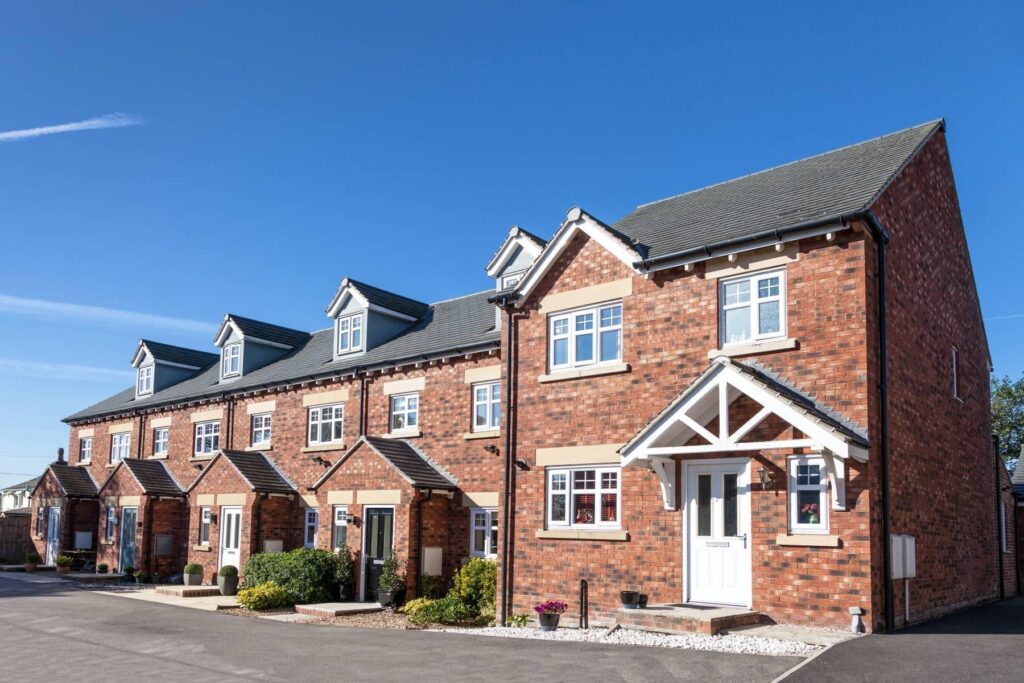The government’s latest scheme to help first-time buyers on to the property ladder is the First Homes programme.
But what is it, how does it work and are you eligible? Find out everything you need to know here…
What is the First Homes scheme?
Under the First Homes scheme, first-time buyers in England can purchase a new-build home with a substantial discount of at least 30%.
Not all new-build developments will be part of the scheme, but the government has stipulated that at least 25% of all affordable housing sold by developers must fall under the First Homes programme.
Am I eligible for the scheme?
To take advantage of the First Homes scheme, you must meet the eligibility criteria:
1. First-time buyers only
The First Homes scheme is only open to first-time buyers in England.
To be classed as a first-time buyer, you can’t have previously owned a property and if you’re buying with someone else, they must also be a first-time buyer.
2. Maximum income rules
To qualify for the First Homes scheme, your household income must be no higher than £80,000, or £90,000 if you live in London.
3. Mortgage rules
Under the First Homes scheme, your mortgage must cover at least 50% of your property’s purchase price.
4. First Homes price caps
The sale price of properties under the First Home scheme is capped at £250,000, or £420,000 if you’re buying in London.
The price caps apply after the discount is added meaning, for example, a property worth £300,000 could be sold for £210,000 with a 30% First Homes discount.
However, the same discount must also be applied when you come to sell your property and your buyer must also meet the First Homes criteria.
5. Are you ‘local’?
The government has suggested that local buyers will be given priority on properties sold under the First Homes scheme.
This means you could have to show some form of ‘local connection’ in order to be eligible, although the exact rules on this could be left for local authorities to decide.
Key workers such as nurses, police officers, teachers and firefighters, as well as military veterans, are also expected to be given priority when First Homes properties start coming on the market.
6. No buy-to-lets
To qualify for the First Homes scheme, you must be buying a main residence that you intend to live in and not a buy-to-let property.
How do I apply for the First Homes scheme?
There’s no application process for the scheme.
Instead, you should speak to developers building homes near you to find out if they intend to offer any under the First Homes scheme.
When will First Homes properties be available?
The First Homes scheme launched in June 2021 and while some properties are likely become available before the end of the year, the majority will start coming on to the market in 2022 and beyond.
The pros and cons of the First Homes scheme
As with all homebuyer schemes, there are a number of pros and cons you’ll need to consider before deciding if the First Homes programme is right for you:
|
First Homes scheme pros |
First Homes scheme cons |
|
First Homes properties are sold with a large discount of at least 30% |
Owners of First Homes properties must sell them with the same discount later on and only to a buyer who meets the scheme’s criteria |
|
You might be able to buy a new home in your local area, rather than being forced to look elsewhere due to high prices |
Only new-build properties are available to buy under the First Homes scheme |
|
You’ll need a smaller deposit and a smaller mortgage, because of the discount being added |
New-build homes can command a premium price and competition for First Homes properties is likely to be high |
The First Home Fund in Scotland explained
Under the Scottish First Home Fund scheme, first-time buyers could apply for loans of up to £25,000 to boost their deposits.
Other key points of the scheme are:
• First Home Fund loans are capped at £25,000, or 49% of a property’s value or purchase price
• Buyers must be first timers and be able to provide at least 5% of their deposit themselves
• Only one person on a joint application has to be a first-time buyer
• Joint applicants can only apply for one loan of up to £25,000
• The property being purchased must be a main residence and not a buy-to-let
• The loans track your property’s value, meaning the amount you owe can rise or fall over time
Due to high demand, the First Home Fund closed to new applications in April 2021.
How big a deposit will I need under the First Homes scheme?
The First Homes scheme offers properties at a discount of at least 30% off their value.
So, you should find that the amount of money you need as a deposit is less than if you were buying a home outside of the scheme.
For example, a property valued at £300,000, but sold with a 30% discount under the First Homes scheme would cost £210,000.
A 10% deposit on that property at its full valuation would be £30,000, but with the discount applied, the same 10% deposit would be £21,000 – a saving of £9,000.
Can I buy a house with a 5% deposit?
It’s possible to buy a property with a 5% deposit and a mortgage that covers the remaining 95% of the purchase price.
Although high loan-to-value mortgages have been rare since the pandemic, the 95% mortgage guarantee scheme and Help to Buy are available for those buyers with a 5% deposit…
The 95% mortgage guarantee scheme
The government’s mortgage guarantee scheme is open to first-time buyers who have a deposit of just 5%.
Under the scheme, first-time buyers can take out a mortgage covering the remaining 95% of their property’s purchase price and a portion of this will be guaranteed by the government, providing protection for lenders.
Find out more about the 95% mortgage guarantee scheme
Help to Buy equity loans
Under the Help to Buy equity loan scheme in England, first-time buyers can apply for a government loan covering 20% of their deposit (40% in London).
They then provide a 5% deposit, with a mortgage covering the remaining 75% of their purchase price (55% in London).
Find out more about Help to Buy equity loans
What are the benefits of being a first-time home buyer?
Getting on the property ladder is never easy, but there are a host of benefits that come with being a first-time buyer, including:
1. Stamp duty savings
First-time buyers in England and Northern Ireland pay no stamp duty on the first £300,000 of a property’s purchase price, up to a maximum price of £500,000.
In Scotland, meanwhile, first-time buyers pay no Land & Buildings Transaction Tax (LBTT) on the first £175,000 of a property’s purchase price.
2. No chain
As a first-time buyer, you won’t have a property to sell.
This can make you appealing to sellers and can mean the process of buying your first home is much faster.
3. Buyer schemes
In England, first-time buyers can take advantage of several schemes to help them get on the property ladder, including:
• The First Homes scheme
• Help to Buy equity loans
• Shared Ownership
In Wales, the Shared Ownership and Help to Buy schemes work in a very similar way to the schemes in England.
Other costs to consider when buying a first home
As well as your deposit and mortgage, there are a host of other costs you’ll need to factor in when buying a home for the first time, including:
• Solicitor’s fees
• Removals costs
• Mortgage fees
• Valuation fees
• Survey fees
• Property insurance
Further reading…
• The differences between buying property in England and Scotland
• Find out what mortgage you can get for your salary




